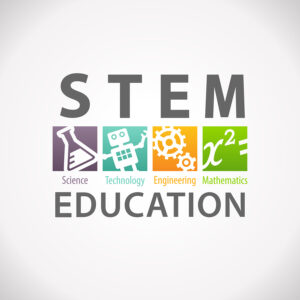STEM (Science, Technology, Engineering and Math) Programs are a curriculum that is based on education, particularly for students in these subject areas. Using an interdisciplinary and applied approach, students have access to a myriad of high-quality learning opportunities across the spectrum in the “STEM” subject areas. In addition, many academia and federal programs have incorporated science, technology, engineering and math as critical priorities for competition surrounding grant funding.
Many entering college should consider or at least explore STEM occupations which typically pay higher entry salaries and have excellent career progression paths. Far too many enter college and select a major based on false assumptions of what prospects await them upon graduation. According to the article titled STEM Majors Will Earn Highest Starting Salaries This Year, “If you’re looking to make a lot of money right out of school, pay attention to your major: College graduates who focused on STEM fields will likely make the highest starting salaries this year.”
They go on to state that in 2016 engineers were expected to make an average of $64,891 right out of school, computer science majors $61,321, and math and science majors will earn an average salary of $55,087. All this while education and humanities majors could expect annual starting salaries of $34,891 and $46,065, respectively! There are considerable opportunities for those willing to tackle the STEM curriculum.
STEM ensures a cohesive learning portfolio with real-world application. More students should focus on these topics; according to the Department of Education, only about 16% of students are interested in careers within the STEM subject areas and only 28% of freshman are specifically interested in a STEM field. Further, 57% of students lose interest in these subject areas post-graduation (Hom, 2014).
In looking at STEM skills worldwide, and taking an average 15 year old high school student as an example, to include developed and developing countries, the U.S. falls 28th out of 71 countries in math and is 24th in science. Further only about 29% of Americans rate their K-12 STEM programs above average (Desilver, 2017). China, for example, has a whopping 41% of STEM degree seeking students; they are basically three times that of the U.S. when it comes to STEM interest.
India and Brazil are also steadily increasing their STEM focus and enrollments; by 2015, Brazil had increased its engineering graduates by 68% and produced more PhD engineers than the US in 2016. Africa and Asia are incorporating incentives into foreign-educated graduates returning home; this entrepreneurial group of STEM graduates from US universities set up about 40% of the start-ups in Bangalore and Beijing in 2011 alone (Katsomitros, n.d.).
President Obama crafted the “Education to Innovate” movement in 2009 to inspire and motive students into these STEM subject fields; the campaign also focused on improvement of teacher skills in these areas. Given this, numerous agencies are partnering with education to create national strategies, funding, coursework and engagement campaigns to improve STEM experiences, awareness and education. Research programs with STEM emphasis are now coupled with grants and federal funding to foster support and interest.
In 2014, $3.1 billion in federal STEM programs and education have been applied and are increasingly expanding. Innovation, networking and skill-building are helping to foster science, technology, engineering and math disciplines, worldwide with the intent of achieving an even greater-skilled workforce in the years to come.
Specific STEM milestones for all students are incorporated throughout their educational life cycle. For elementary school, STEM coursework and education along with an awareness of each subject area as well as accompanying occupations are explored. To do this, real world problems are used to connect each of the subject areas and are presented in an organized fashion. The goal here is to attract students, motivate them and get them excited about each of the STEM subject areas; emphasis is placed on external opportunities for continuous STEM learning as well. For middle school students, STEM challenges increase; academics, and occupational fields are discussed in more detail…students begin having opportunities to dig a bit deeper into these subject areas with hands-on learning, education and observations. Finally, high school students are able to take on challenges surrounding the STEM subject areas, positioning them for additional education and/or STEM-type employment opportunities. There is a heavy focus on incorporation of external STEM activities with high school learning.
The STEM curriculum, although challenging, is very rewarding; many of the students are motivated to participate. Since STEM is less popular in certain populations and areas, many of the programs are focused here. Through a myriad of grants, educational opportunities and more, students, who would not have been exposed to these subject areas are given an opportunity to do so. In addition, female students are also targeted for the program in order to close the technology gap between them and their male technical counterparts.
With many critical sectors facing shortages, the STEM program has proved to be a worthwhile endeavor in preparation for a successful, technologically-driven future. Websites such as: STEMconnector.org offer insight into the STEM initiatives that organizations and corporations are currently providing.
References:
Career Planning Tools
The information provided may not cover all aspects of unique or special circumstances, federal and postal regulations, and programs are subject to change. Our articles and replies are time sensitive. Over time, various dynamic human resource guidance and factors relied upon as a basis for this article may change. The advice and strategies contained herein may not be suitable for your situation and this service is not affiliated with OPM, the postal service or any federal entity. You should consult with school counselors, hiring agency personnel offices, and human resource professionals where appropriate. Neither the publisher or author shall be liable for any loss or any other commercial damages, including but not limited to special, incidental, consequential, or other damages.








